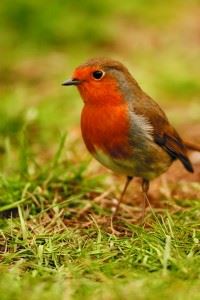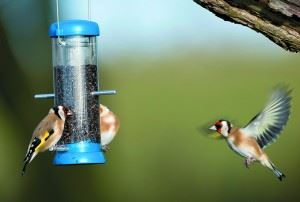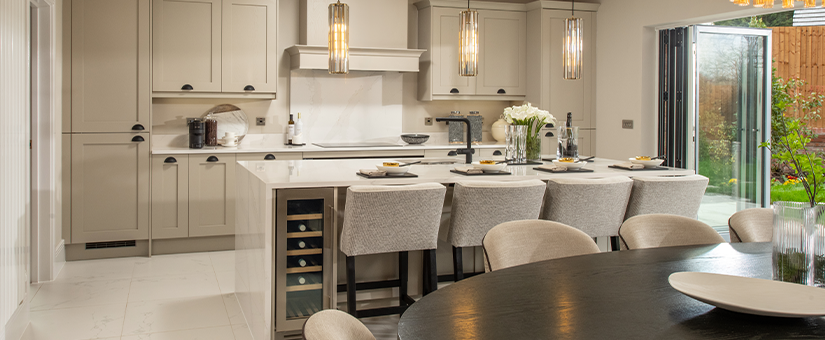Bruce Walker of Westwood Landscape shares his gardening tips with Story Living.
Brrr – we love our gardens, but imagine having to live in them all through the Winter… That, of course, is exactly what our British wildlife has to do. And at this time of year, good gardeners are turning their mind to what they can do to keep their resident and visiting wildlife as happy as possible during the cold, dark months. So here are our easy tips for making life that little bit easier for the birds and animals who rely on your garden for food and shelter.

Garden birds: Robin, Erithacus rubecula, on lawn.
BIRDS
Many of us feed the birds, but it helps if you can put out a mixed range of feed. Make fatballs by melting suet into a mould – you can use a coconut shell for this. You can add extra elements for different birds; for instance, finches like berries and starlings enjoy peanuts. Sparrows and nuthatches like a mixture of seeds and grains and wrens will appreciate leftover cheese cut up into small pieces. Wire feeders are a good idea for peanuts and you can also buy special seed feeders. If the water in your garden freezes over, make sure you melt the ice regularly so they can drink – if you have a pond, do this with the bottom of a warm pan so you don’t shock any wildlife below. And don’t forget, Spring isn’t that far away, so put up nestboxes or clean out ones you already have in place. The RSPB has lots more information – www.rspb.org.uk.
BATS
Bats hibernate through the Winter in dry places and are probably already asleep – but this Winter, put up bat boxes (available from garden centres) ready for next year.
FROGS AND TOADS
British amphibians also hibernate and need areas away from ponds such as log piles, under stones and in compost heaps – so careful when turning those over! Frogs also hibernate in the bottom of ponds, so see the advice adjacent about melting the ice carefully for other animals and birds.
HEDGEHOGS

Goldfinch Carduelis carduelis, feeding from a garden feeder, Co. Durham, November
Hedgehogs sleep the Winter away in hedge bottoms and under piles of leaves. They’re becoming quite endangered, so make a special effort on Bonfire Night to make sure none have decided to snooze in your ready-to-light pyre.
INSECTS
Insects are important too – they play a major role in pollinating your garden in Spring and act as a food supply for birds and animals. Help yours get through the big chill with the help of a bug hotel, available from wildlife and garden shops.
Visit page 39 of Story Living magazine to discover Winter treats for your outdoor space: http://goo.gl/IWKE7Z










